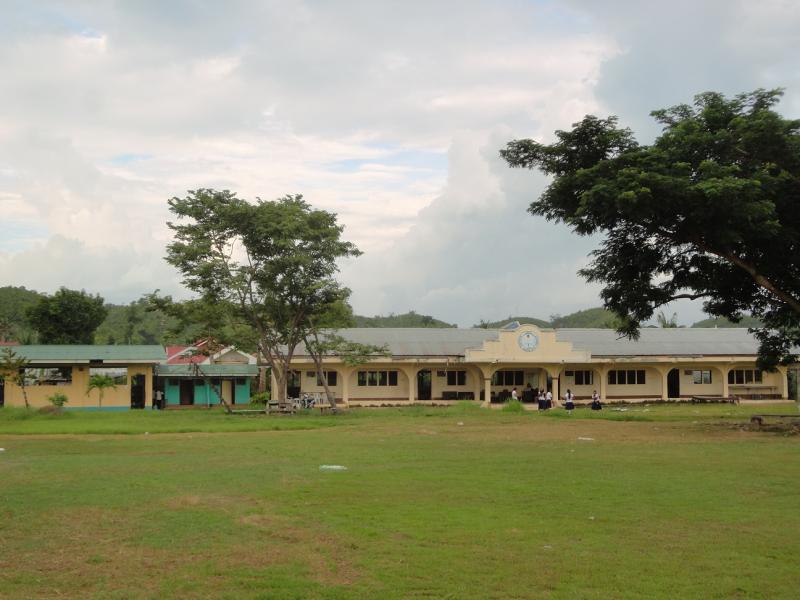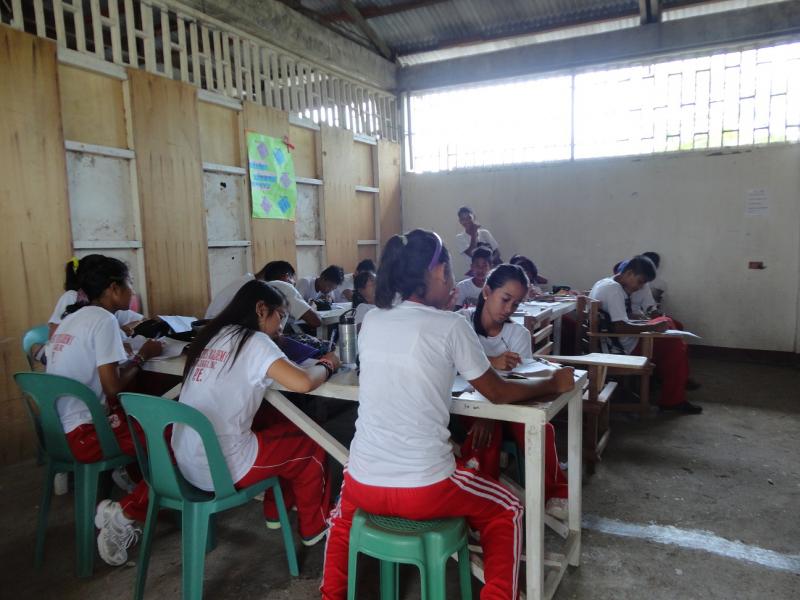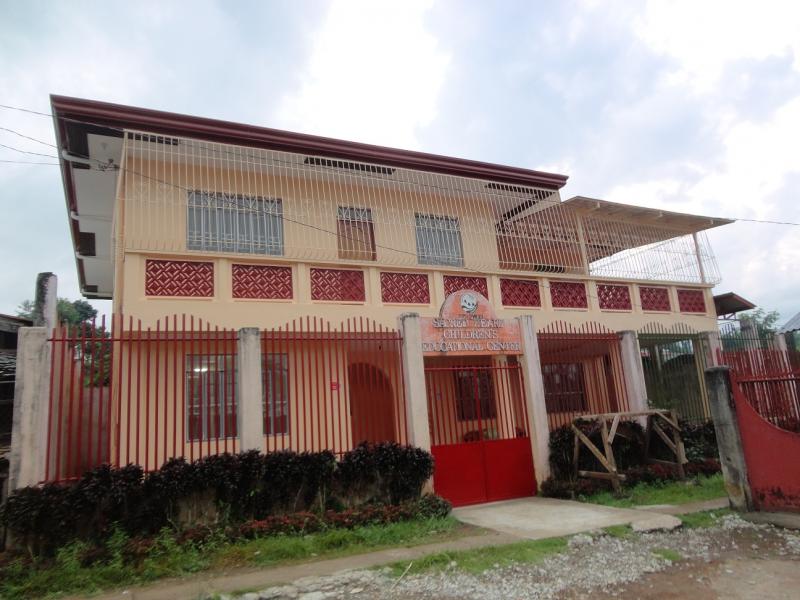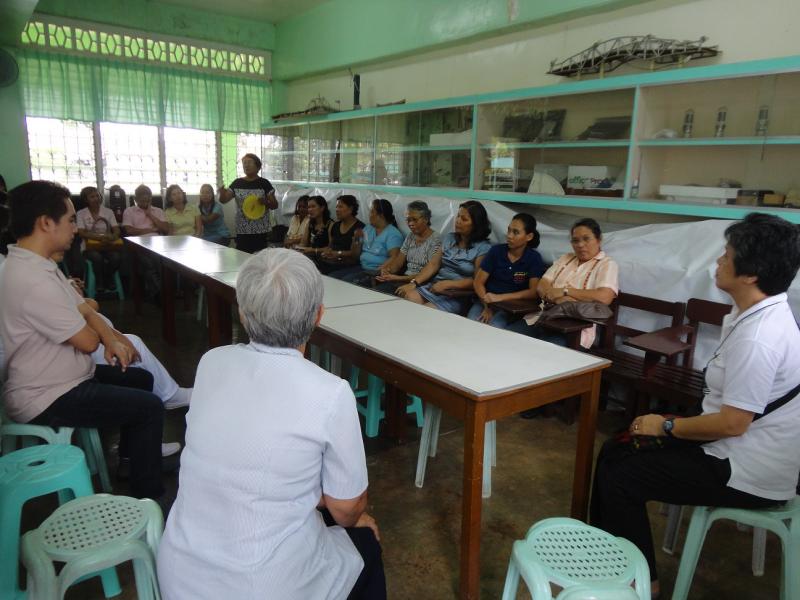Nine months have passed since the supertyphoon Yolanda (international name Haiyan) hit the Philippines and claimed the lives of thousands of people, destroyed houses, churches and property; brought down business establishments, devastated lands, trees and vegetation. I visited some of the Yolanda-hit areas in Eastern Samar and Leyte with Sr. Digna Dacanay RSCJ, from August 12 to 15, 2014. It was my third visit to the typhoon-affected areas since November last year. The main purpose of the trip was to make a spot check on the progress of rehabilitation of the institutions to which donations were given through the Philippine District of the Society of the Sacred Heart.
Generous donations poured in from all over the world. The first group of beneficiaries were victims directly known to the RSCJ. This included RSCJ educational institutions for the poor: the St. Philippine Duchesne’s Ormoc Workers Foundation (SPDOWFI) in Ormoc, and the Sacred Heart Institute for Transformative Education (SHIFT) in Northern Samar. Help was given in the form of relief activities and repair of houses, infrastructure and other facilities. Donations were also given to a totally damaged Church in Basey, Eastern Samar; to an NGO working for the livelihood of survivors, and to SHIFT for post-trauma debriefing workshops. The Philippine District also decided to share donations with the Eastern Visayas Assocation of Private Schools (EVAPS) of which Sr. Digna was the president. Many private schools, unlike the public schools, did not receive any financial assistance either from the government or from large international organization. Through us, 45 private schools received assistance for the rehabilitation of their damaged educational facilities. Eight hundred individual teachers and staff of EVAPS member schools whose residences were damaged also received financial assistance.
As we travelled hundreds of kilometers by van from Tacloban to Eastern Samar and back to different parts of Leyte for three days, three things struck me. The first one was the sight of thousands of newly installed silver-colored galvanized iron roof sheets reflecting strong sunlight. There were still many faded tents with the logos of international organizations in some places, but many small newly built native houses caught my attention, too. Local people told us that P 35,000 (US$ 850) would build a small one room house with woven bamboo walls and galvanized iron roof sheets. The second impression was new life within nature. Many of the trees that had looked lifeless nine months ago had regained their strength and dark green leaves had grown thick again. The third thing that struck me was the presence of international aid organizations. We seldom saw public or private vehicles on the provincial road, but most of the vehicles we saw were the SUVs of international aid organizations still assisting in the rehabilitation of devastated areas. There were many tarpaulin displays of international aid organizations that mentioned their rehabilitation projects. Surely the rehabilitation efforts had been made possible by so many good hearted people and organizations. However, because of the vast area that the typhoon passed through, there were still people, especially those living outside of the areas covered by the media, who would still need assistance to stand up again. The rehabilitation process will probably take more than a decade.
In our visit to schools which had received financial assistance, we could see how wisely the donation was used to serve the young people of their respective places. The donations for the school buildings were used by some to install new roofs, by others to buy students chairs and desks, by another to build toilets. Compared with the extent of the damage, our donation was small, but it contributed to help build the future of the youth in Eastern Samar and Leyte. .It was very inspiring for me to interact with some of the school administrators who were so dedicated to the task of restoring the school for the students even if they themselves were among the typhoon victims. We also had opportunities to meet the teachers and school personnel who had received the financial assistance to rebuild or repair their houses. All the people whom we met expressed their deep gratitude to the donors who lifted them up again from the devastation. Many of them still live in partially-repaired houses, but at least, they now live under a roof that protects them from rain. As they recounted their stories, many were shedding tears.
The supertyphoon Yolanda destroyed so much in Eastern and Central parts of the Philippines beyond our imagination. It was a natural calamity, but it was also partly a human-made disaster because of global warming aggravated by our modern lifestyle. It has been predicted that more life-threatening natural calamities will happen in the near future. Through Yolanda we experienced large-hearted generosity and solidarity expressed in various ways such as prayers, emails, letters, fund-raising activities and donations from all over the world. We, the Philippine District, would like to express our sincere and deep gratitude to all the people who showed solidarity with the victims of Yolanda. THANK YOU SO MUCH for your love and care for our suffering people. You will always be remembered by us and by all the victims.
Yuka Arita rscj
Section:
Province:




